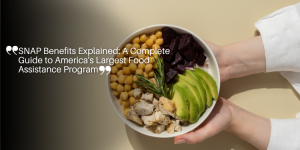SNAP Cuts in 2025: Impacts, Controversies, and Consequences for Millions of Americans

Introduction
In 2025, the United States Congress is facing controversial proposals aimed at significantly altering how food assistance is provided to low-income families.
The main focus is on the Supplemental Nutrition Assistance Program (SNAP), which has historically played a crucial role in combating hunger and ensuring food security.
This article explores the most relevant issues surrounding SNAP, the impact of the proposed changes, and the social, economic, and political repercussions of these measures.
What Is SNAP?
The Supplemental Nutrition Assistance Program, formerly known as “food stamps,” is a federal initiative administered by the U.S. Department of Agriculture (USDA), with decentralized implementation by individual states.
Its core goal is to provide monthly benefits to help low-income families purchase basic and healthy foods.
As of February 2025, more than 42 million people were enrolled in the program, receiving an average of $188 per recipient.
SNAP benefits are provided through Electronic Benefit Transfer (EBT) cards, which can be used at approved grocery stores and farmers’ markets.
These benefits serve as a buffer against food insecurity and malnutrition in communities across the country.
SNAP Cut Proposals: Context and Scope
The bill titled “One Big Beautiful Bill Act,” approved by the House of Representatives in May 2025, includes estimated spending cuts of nearly $300 billion to SNAP over the next decade.
Key proposed changes include:
- Raising the work requirement age from 54 to 64;
- Reducing federal contributions and increasing financial responsibility for states;
- Revising exemptions for parents with young children;
- Imposing steeper penalties on states with high benefit distribution error rates.
According to estimates from the Congressional Budget Office (CBO), about 5.4 million people could lose all or part of their monthly benefits if the legislation is enacted without amendments.
These proposals have sparked fierce debates among policymakers, advocacy groups, and researchers, with many warning of increased hardship for vulnerable populations.

Federal and State Funding for SNAP
Historically, the federal government fully covers SNAP food benefit costs, while states are responsible for program administration.
The current proposal maintains this structure until the end of fiscal year 2027. Starting October 2027, states would be required to cover 5% of benefit costs.
This share could rise to 25% if the state registers high distribution error rates (above 10%).
Additionally, federal contributions to state administrative costs would be reduced from 50% to 25%.
This shift is expected to place a significant financial burden on states, particularly those with higher rates of poverty or fewer resources to manage benefit delivery systems.
Some state officials have expressed concern that the proposed cost-sharing model could force them to reduce benefit amounts or limit enrollment to stay within budget.
Who Will Be Most Affected by the Cuts?
Data from the Urban Institute indicates that the proposed changes could primarily affect working-age adults without dependents, parents of children over age six, and vulnerable individuals who currently qualify for benefits.
It is estimated that up to 3.5 million people could be excluded from the program monthly.
Additionally, states with weaker labor markets or higher unemployment rates may face increased challenges in ensuring SNAP recipients meet new work requirements.
These areas may also struggle to expand job training or support programs necessary to help residents maintain benefit eligibility under the new rules.
Work Requirements: What Are They and Who Is Exempt?
To maintain benefits, able-bodied adults must work at least 80 hours per month in paid or volunteer roles. Exemptions include:
- Pregnant women;
- Veterans;
- Individuals with certified physical or mental disabilities;
- Young adults formerly in foster care at age 18;
- Participants in other assistance programs such as Temporary Assistance for Needy Families (TANF).
These requirements are designed to encourage workforce participation, but critics argue that they often disproportionately affect individuals facing barriers to employment, such as lack of transportation, limited education, or caregiving responsibilities.
There is also concern that work requirements may create administrative burdens and lead to unintended benefit loss for eligible individuals.
Changes for Parents With Young Children
A sensitive change in the proposal is the removal of the automatic exemption for parents with children over age 6.
Currently, any household member responsible for a dependent child is exempt. Under the new legislation, parents of children aged 7 or older would be required to meet the work requirement.
Advocacy organizations have criticized this change, warning that it could strain single-parent households and reduce the time available for caregiving, particularly in households without access to affordable child care.
The policy change may also increase pressure on mothers, who represent a significant portion of SNAP recipients with young children.
SNAP Participant Demographics
According to USDA data from 2022:
- 35% of recipients were white;
- 26% were Black;
- 15% were Hispanic;
- 4% were Asian;
- Less than 2% were Native American.
About one-third of participating households had children.
The majority of these families were headed by a single adult, 43% of whom had some form of income.
Participation rates are also influenced by geographic factors, with higher concentrations in densely populated states such as California, New York, Florida, and Texas.
In contrast, states with smaller populations account for a much smaller share of national SNAP enrollment.
SNAP and the Farm Bill
SNAP is part of broader legislation known as the Farm Bill, which governs U.S. agricultural and food policy.
Updated every five years, the Farm Bill includes SNAP under its nutrition section. As of 2025, the active version is an extension of the 2018 Agriculture Improvement Act, valid until September 30, 2025.
The Farm Bill is essential in defining funding levels, program guidelines, and long-term goals for food assistance in the U.S. Debates around SNAP within the Farm Bill framework often highlight tensions between agricultural interests and social welfare advocates, reflecting the program’s dual role in supporting both producers and consumers.
What Does Academic Research Say About SNAP?
| 📌 Area of Impact | Study Findings | Key Benefits |
|---|---|---|
| 💼 Employment | Work requirements in Virginia did not improve employability but reduced program retention | Highlighting the need for supportive policies rather than punitive conditions |
| 🩺 Health | Studies showed increased pediatric visits, better healthcare access, and reduced child abuse risk | Improved well-being and preventive care for low-income families |
| 📚 Education | Children in extreme poverty performed better in math when families consistently received SNAP | Link between food stability and cognitive development |
| 🥦 Nutrition & Food Security | HFFI and SNAP helped improve diets and reduce food insecurity in urban food deserts | Better access to healthy food and sustained community support |
Other studies have found that SNAP reduces food insecurity among both adults and children, particularly in households experiencing economic shocks.
SNAP has also been linked to lower healthcare costs, as improved nutrition leads to better long-term health outcomes.
These findings underscore the program’s importance beyond immediate hunger relief, highlighting its broader role in promoting public health and social stability.
Conclusion
The proposed changes to SNAP represent more than just budget adjustments—they challenge the effectiveness of one of the foundational pillars of the U.S. social safety net.
While the pursuit of fiscal responsibility is important, political decisions must also consider the social and human impacts of reforms.
The 2025 SNAP debate demands in-depth analysis, empathy, and a commitment to balanced solutions that ensure not just savings, but also dignity and well-being for millions of Americans.
As policymakers deliberate on the future of SNAP, it is crucial to engage diverse voices, including those of program participants, researchers, state officials, and advocacy groups.
Their insights can inform policies that are both fiscally sound and socially just—supporting families in need while strengthening the nation’s long-term resilience.







